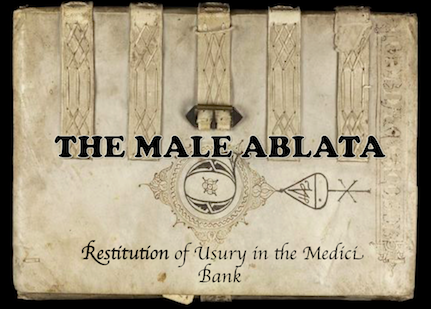Donations and Publicity
Therefore, while some performed restitution through direct monetary payment of all or parts of their usurious income, the others resorted to a more qualitative and symbolic way of atonement by commissioning religious art and donating it to religious institutions. How exactly is that better?
First, as we just saw, you avoid giving back all of your life’s earnings and spend a more moderate sum of money on art.Second, making a donation to a church or a monastery meant that the clerics in charge of that institution would be regularly praying for the donor’s soul, thus making his time in Purgatory even shorter. Giving money back to a former client is sure one way of clearing your soul from a particular sin, but making a donation to a religious community guaranteed that pious monks, whose words surely have some weight in God’s eyes, would be praying for the forgiveness of all, not just usury, but all of your sins.
Aware of these benefits, Cosimo de’ Medici donated so much money to religious art and architecture for the purpose of restitution that his contemporaries accused him of “trying to buy his way into heaven.”[1] The banker was so concerned with his afterlife that he paid for the restoration of the monastery of San Marco in Florence in return for a papal bull clearing him of all his sins, which he framed and hung up in his personal cell in that monastery so that he could fall asleep while looking at it every time he spent the night there.
Moreover, to make sure that the men praying for his soul were prudent enough for God to heed to their prayers, Cosimo specified that, after he restored the monastery of St. Marco, the Benedictine monks of the Sylvestrine congregation, whom he considered unscrupulous, had to be replaced by the well-reputed Dominican friars. So, the benefits of making donations to religious institutions are clear: you get pious men pray for your soul and for the absolution of all your sins and, if your donation is particularly generous, as in case of the Monastery of San Marco, you could even get a signed and stamped paper forgiving all of your sins. If this is so, why didn’t Cosimo and other bankers make all their donations to religious institutions in cash? Why did they go through the trouble of donating art?
And that brings us to my last point, which is publicity. When you donate your artwork to a centrally located, popular church or build a new house of worship in a prominent urban location, people actually find out about your efforts to atone for your sin and respect you for it. Given the sermons delivered against usurers and frequent accusations by laypeople, bankers must have been very anxious to clear their public images. Thus, donating art to be displayed in religious spaces is a way to express repentance publicly and thus aid one’s reputation as well as one’s soul.

